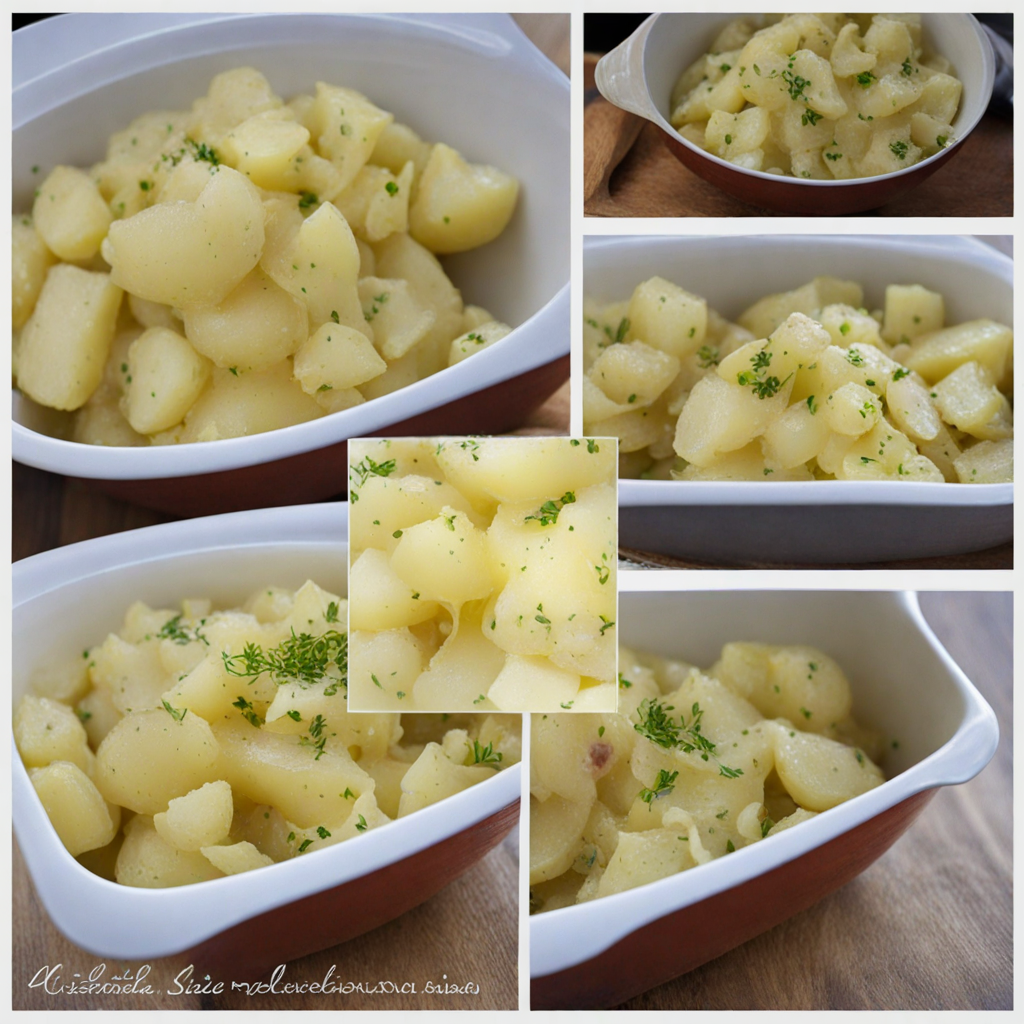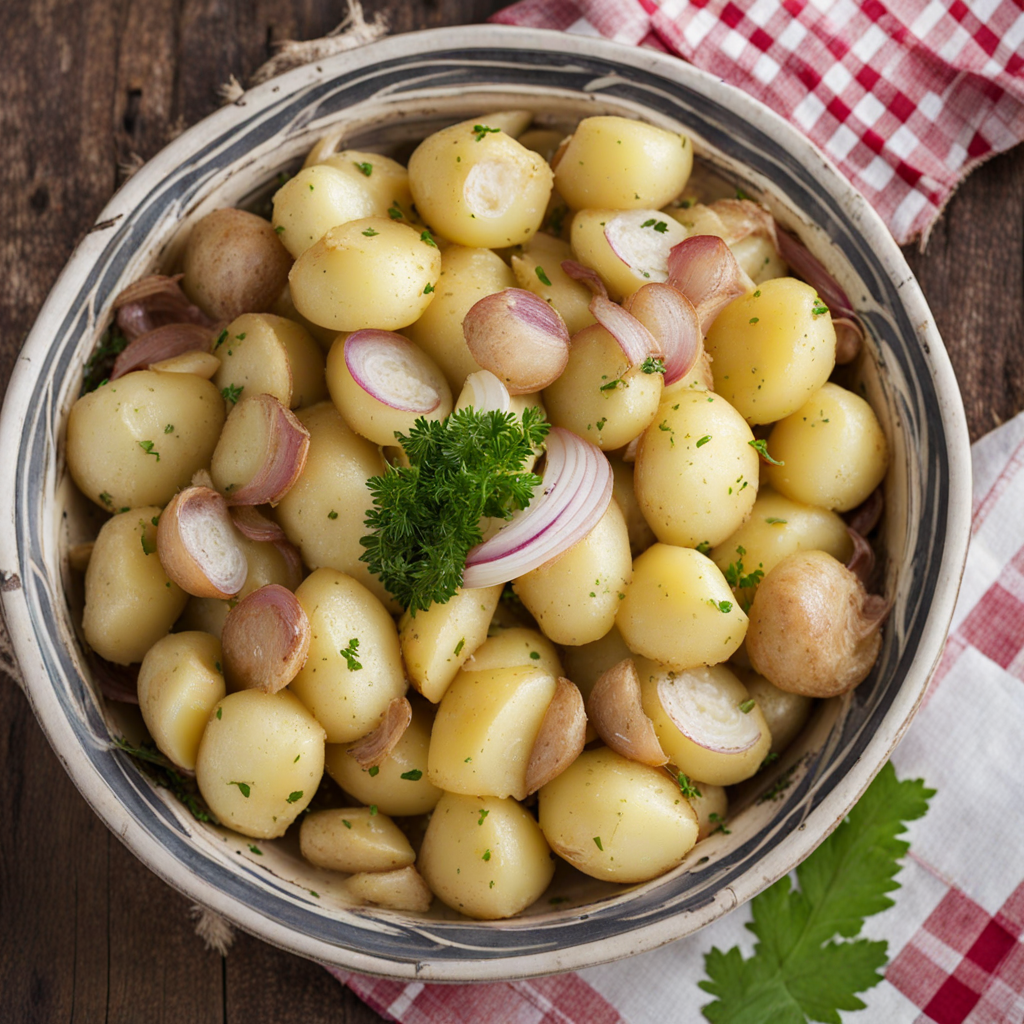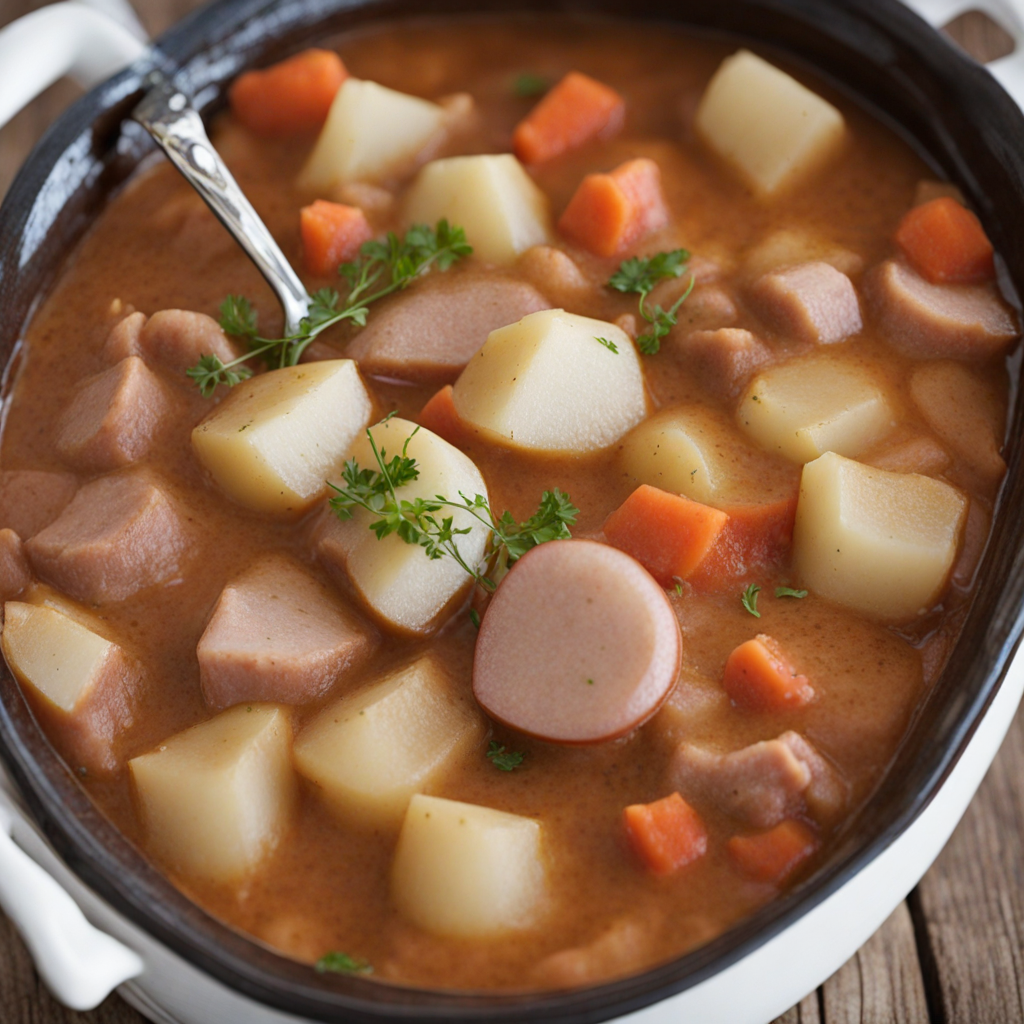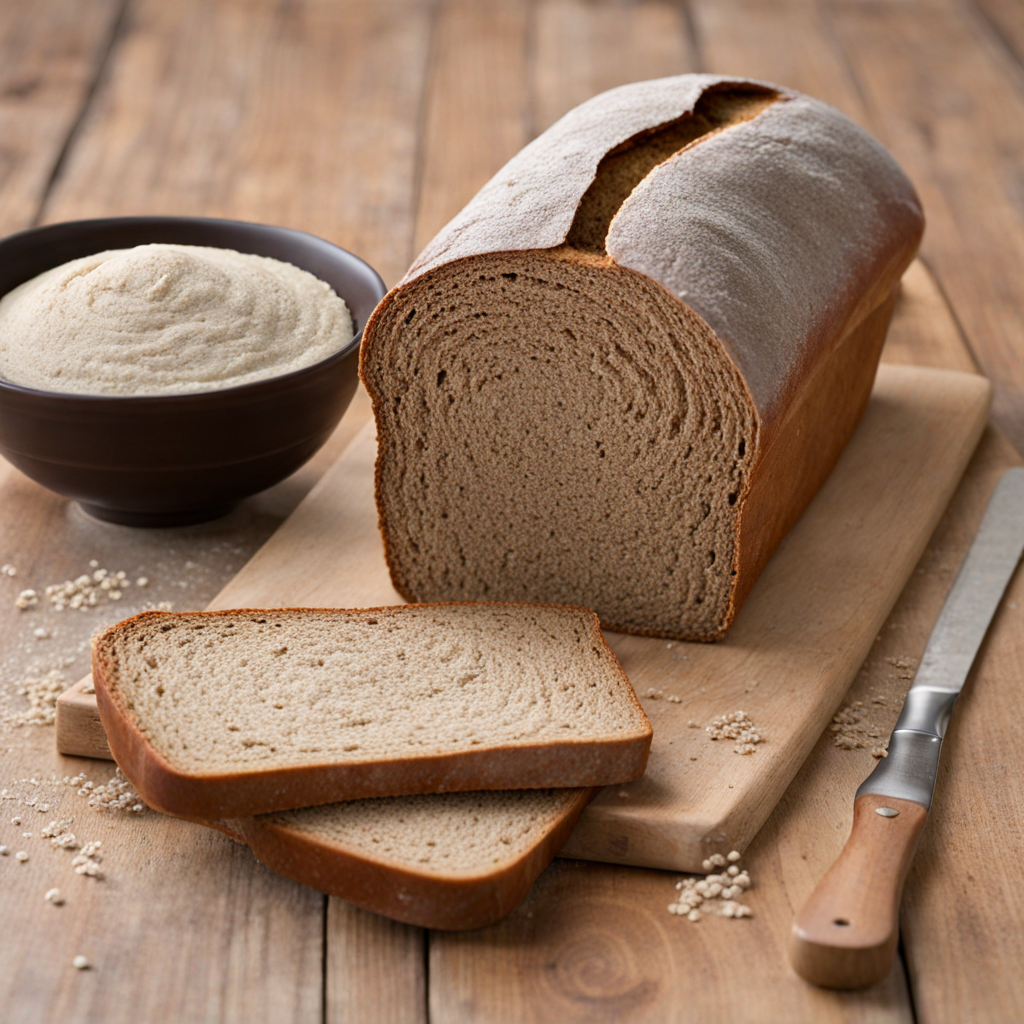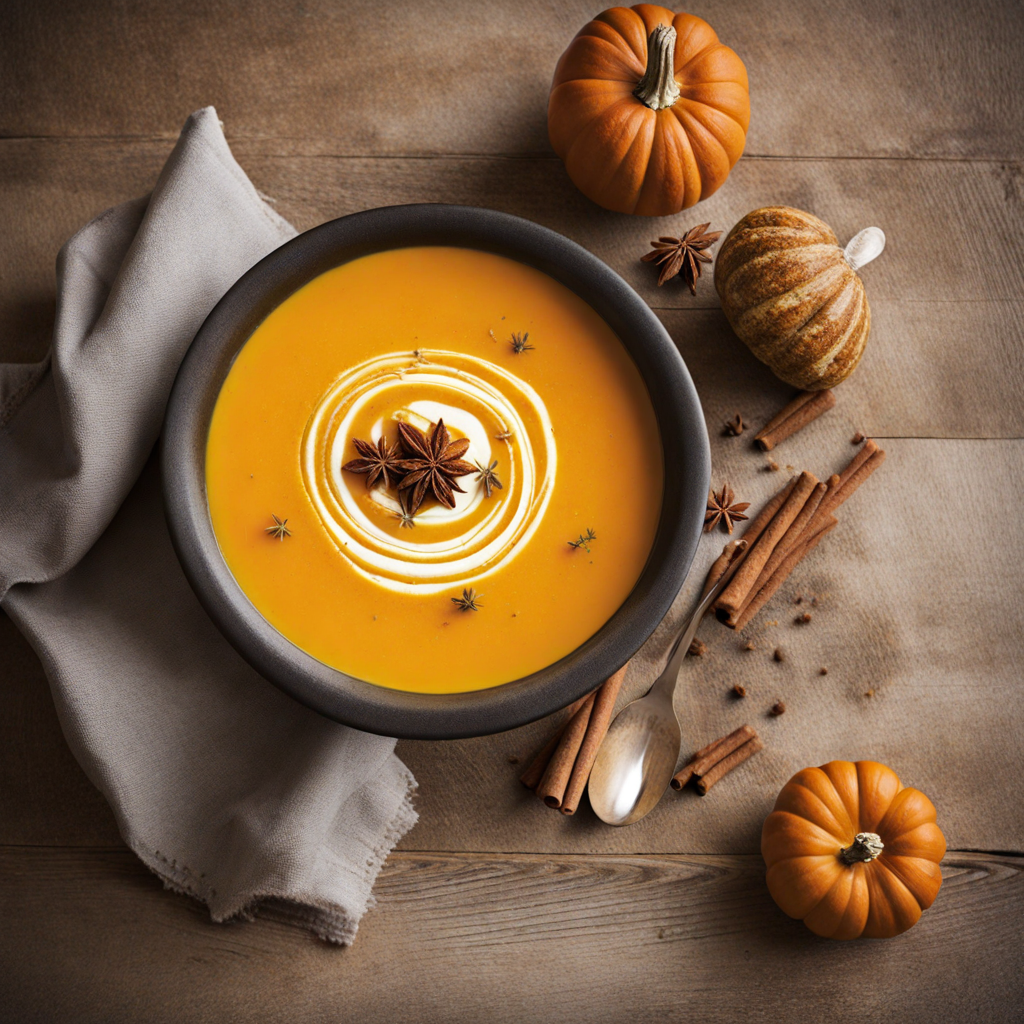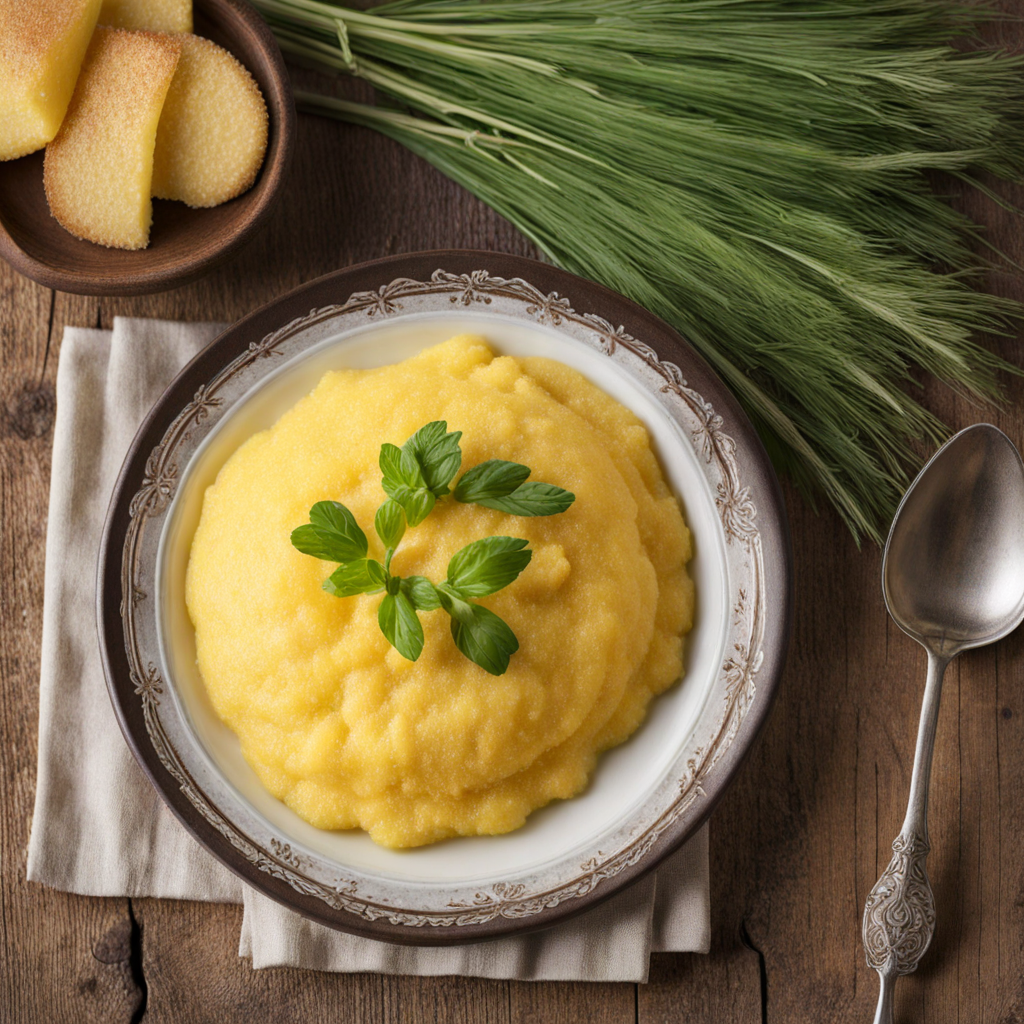Potato Salad
Potato Salad, a beloved dish in Slovenia, showcases the country's rich culinary heritage, combining simplicity with vibrant flavors. This delightful salad primarily features tender boiled potatoes, which are often peeled and diced into bite-sized pieces. The potatoes are typically mixed with a variety of fresh ingredients, including crisp onions, tangy pickles, and occasionally hard-boiled eggs, adding layers of texture and taste that make each bite a savory experience. The use of locally sourced ingredients elevates the dish, allowing the flavors to shine through in their natural state. What sets Slovenian Potato Salad apart is its dressing, which is often a harmonious blend of vinegar, oil, and mustard. This tangy dressing not only enhances the natural flavor of the potatoes but also provides a refreshing zest that balances the earthiness of the main ingredient. Some variations may include fresh herbs, such as parsley or dill, which add a fragrant touch and a burst of color, making the salad visually appealing as well as delicious. This versatile dish can be served warm or cold, making it an ideal accompaniment to grilled meats, fish, or as part of a picnic spread. Whether enjoyed at a family gathering or a festive celebration, Slovenian Potato Salad is a comforting dish that invites you to savor the delightful combination of flavors, embodying the essence of Slovenian cuisine with every forkful.
How It Became This Dish
The History of Krompirjeva Solata: Slovenia’s Beloved Potato Salad Krompirjeva solata, or Slovenian potato salad, is a dish deeply rooted in the culinary traditions of Slovenia. Its simplicity belies a rich tapestry of history, culture, and regional variations that have evolved over time. This dish not only reflects the agricultural heritage of Slovenia but also serves as a symbol of community and festivity within Slovenian culture. #### Origins of Krompirjeva Solata Potatoes were introduced to Europe in the late 16th century, hailing from the Andean regions of South America. Initially met with skepticism, potatoes gradually became a staple food source across Europe, including Slovenia. By the 18th century, they were firmly integrated into the Slovenian diet, particularly in rural areas where they thrived in the fertile soil of the region. Krompirjeva solata emerged as a practical dish during this period. The use of potatoes made sense, not only because they were abundant and affordable but also because they could be stored for long periods, making them an essential part of peasant diets. The basic form of this salad began to take shape, featuring boiled potatoes as its main component, often seasoned with salt and vinegar. #### Cultural Significance In Slovenia, food is more than sustenance; it is a crucial aspect of social and cultural identity. Krompirjeva solata is often served at family gatherings, festivals, and celebratory occasions, embodying the spirit of togetherness. It is typically accompanied by grilled meats, especially during summer barbecues and holidays, symbolizing the joy of communal dining. The salad is also a staple in the Slovenian Easter feast, representing the arrival of spring and renewal. As families gather to celebrate this significant holiday, the inclusion of krompirjeva solata on the table signifies not just tradition but also the abundance of the land after the long winter months. #### Development Over Time As Slovenian society modernized, so too did the preparation and presentation of krompirjeva solata. While the traditional recipe focused on basic ingredients—boiled potatoes, vinegar, salt, and sometimes onions—the post-war era saw an infusion of new ingredients and flavors. This period marked the beginning of a more inventive approach to the dish, incorporating mayonnaise, mustard, and boiled eggs, aligning it with broader European trends in salad preparation. In the 1980s and 1990s, Slovenia experienced significant political and cultural changes following its independence from Yugoslavia. This newfound autonomy sparked a renewed interest in national identity, which in turn influenced culinary practices. Chefs and home cooks alike began to embrace regional ingredients and traditional recipes, leading to a renaissance of Slovenian cuisine, including krompirjeva solata. During this time, the dish started appearing in various culinary festivals and events across Slovenia, showcasing its versatility and adaptability. Chefs began to experiment with flavor profiles, adding herbs such as parsley and chives or introducing elements from neighboring cuisines, including the Italian influence of olives or capers. #### Regional Variations One of the fascinating aspects of krompirjeva solata is its regional variations throughout Slovenia. In the northeastern regions, particularly Prekmurje, the salad may feature a touch of sour cream or yogurt, lending a creamier texture. In contrast, the coastal areas might incorporate fresh seafood or local herbs, reflecting Slovenia’s diverse geography and culture. In the mountainous regions, where hearty meals are favored, krompirjeva solata often appears as part of a larger spread, accompanied by cured meats and cheeses, emphasizing the agricultural bounty of Slovenia’s pastoral landscapes. These variations highlight how local ingredients and culinary traditions shape the dish, making it a reflection of Slovenia’s diverse cultural heritage. #### Krompirjeva Solata in Contemporary Slovenia Today, krompirjeva solata remains a beloved dish in Slovenia, transcending generations. It is found in homes, restaurants, and at public events, where it continues to be a symbol of Slovenian hospitality. The dish has gained popularity beyond Slovenia’s borders, as Slovenians living abroad seek to maintain their culinary heritage. As the global food movement grows, there is an increasing interest in local and traditional dishes like krompirjeva solata. Chefs are showcasing it in innovative ways, presenting it alongside modern culinary trends while still honoring its roots. This resurgence has led to a greater appreciation for Slovenian cuisine, with krompirjeva solata serving as a culinary ambassador. #### Conclusion Krompirjeva solata is more than just a potato salad; it is a reflection of Slovenian identity, culture, and history. From its humble origins as a peasant dish to its place at the center of festive gatherings, this salad encapsulates the essence of Slovenian culinary heritage. The evolution of its recipe and preparation demonstrates the adaptability of traditional foods in a modern context, while regional variations highlight Slovenia’s rich agricultural diversity. Today, as Slovenia continues to embrace its culinary traditions while looking towards the future, krompirjeva solata stands as a testament to the power of food in connecting people, cultures, and histories. Whether enjoyed at a family gathering or a festive celebration, this beloved dish remains a reminder of Slovenia’s vibrant culinary landscape and its enduring legacy.
You may like
Discover local flavors from Slovenia


